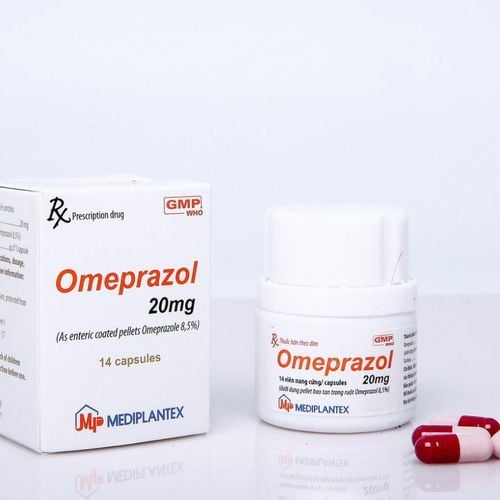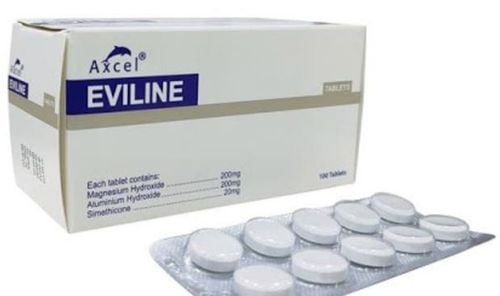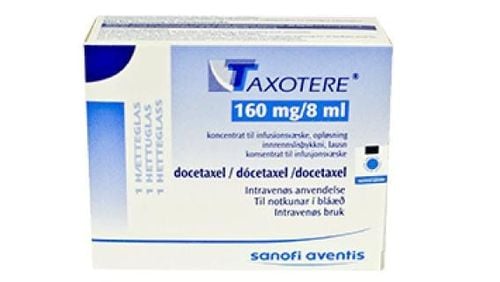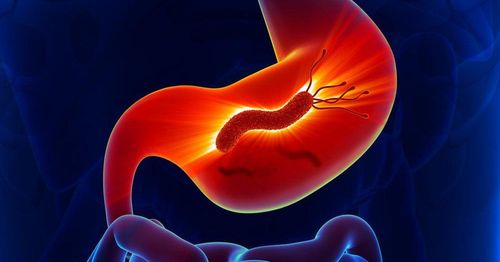This is an automatically translated article.
Post by Master, Doctor Mai Vien Phuong - Gastrointestinal Endoscopy - Department of Medical Examination & Internal Medicine - Vinmec Central Park International General Hospital.
The ability of HP bacteria to cause stomach cancer is quite vague. It has been found that H. pylori toxin does not induce mutations directly on gastric epithelial cells. Viral factors have been described in H. pylori, but the presence or absence of these factors is not important in disease progression.
1. Update the basic information about H.pylori
H. pylori is a gram-negative, S-shaped, or spirochete bacterium of the genus Helicobacteraceae. In 1979, R. Warren identified Campylobacter pylori and suggested that this microorganism is the causative agent of gastritis. In 1982, BJ Marshall isolated the bacterium H. pylori and showed the relationship between its persistence and the development of peptic ulcer disease. According to modern concepts, the main habitat (live, develop and reproduce) of H. pylori is the epidermal mucus layer in the pit of the stomach and the first part of the duodenum. H. pylori is usually not detected in the subepithelial space of the stomach nor in the epithelium of the gastric glands. The ability of microorganisms to move through the mucus layer occurs due to the presence of a number of mobile flagellates, which contribute to the movement of bacteria to areas with suitable conditions for survival.2. The most favorable conditions for the survival of H.pylori . bacteria
The most favorable conditions for the survival of bacteria are the optimal temperature of 37 o C, pH 4-6, microbiological conditions, the presence of water and nutrients. H. pylori does not contain carbohydrate-metabolizing enzymes. Bacterial cell metabolism is powered by the energy released during the use of amino acids obtained from the host. Microorganisms are characterized by their ability to survive in the human body in the form of an S, a C (U) and a coccoid. The same mechanism of transition from one form to another is adaptation to survive adverse environmental conditions (changes in temperature or pH, long intervals between meals and antiretroviral therapy). born ).
3. Epidemiology and current medically recognized routes of transmission
Available data suggest a high prevalence of H. pylori infection in the population. H. pylori detection rates vary from 35 to 90% among representatives of the population in different regions. The large variability of the index depends on a number of factors, including the socioeconomic status of the country, age, H. pylori detection method, and others. Thus, in their paper, Mentis et al. reported the detection of H. pylori in 71.6% of the population in Italy and in 84.2% of those surveyed in Poland.
Luzza et al reported that in Italy out of 518 subjects evaluated by both a 13 C-urea breath test (UBT) and serology, 310 (59.8%) were positive for UBT, 479 ( 92.4%) vacA-positive and 369 (71.2 %) cagA-positive. The same indicators for Africa and Asia are distributed in the following order: Ethiopia (72.2%) and Rwanda (75.3%); China 83.4%; Japan (39.9%) and Taiwan (72.1%).
Burucoa et al established the largest proportion of H. pylori-positive patients in Africa (70.1%) [95% CI: 62.6% -77.6%]; South America (69.4%) (95% CI: 63.9% -74.9%) and West Asia (66.6%) (95% CI: 56.1% -77.0%). The least likely regions are Oceania (24.4%) (95% CI: 18.5% -30.4%); Western Europe (34.3%) (95% CI: 31.3% -37.2%) and North America (37.1%) (95% CI: 32.3% -41.9%). In Russia, the prevalence of H. pylori infection in children aged 5–10 and 11–14 years and in adults is 29%, 50% and 70%-92%, respectively.
4. The main transmission route of H.Pylori
To date, the main transmission route of H. pylori is unknown. Infection most often occurs from person to person; In this case the general mechanism can be divided vertically (i.e. transmission of pathogens within a family) and horizontally (contact with people outside the household or infection with environmental objects). - environmental pollution). Possible routes of transmission, such as fecal-oral, mouth-to-mouth, and stomach-to-mouth, have been comprehensively studied in recent years. H. pylori can be isolated from various body fluids. The causative agent is detected in dental plaque, saliva, tonsil tissue, canals and on the oral mucosa (including on the tongue surface), using polymerase chain reaction assays. Particular attention is paid to environmental pollution associated with the consumption of water and food containing H. pylori. Most authors consider the transmission of pathogens in the family as the main and most significant route. This opinion is confirmed by factors, such as close family contact, single socioeconomic status of family members, and genetic predisposition. for the existence of H. pylori.

5. Helicobacter pylori causes stomach cancer?
5.1. H. pylori and stomach cancer
Stomach cancer occupies one of the leading positions in cancers. Epidemiological studies have demonstrated that gastric cancer develops in people infected with helicobacter pylori 1.4 to 4.2 times more often than in the general population. At the same time, it should be noted that gastric cancer develops only in 1%-2% of cases with a frequency of 50% or more in Helicobacter-infected stomachs worldwide.
The ability of HP bacteria to cause stomach cancer is quite vague. It has been found that H. pylori toxin does not induce mutations directly on gastric epithelial cells. Viral factors have been described in H. pylori, but the presence or absence of these factors is not important in disease progression. In addition, there is evidence that H. pylori persists in increasing the risk of developing only distal (pyloric) gastric cancer, whereas proximal (cardiac) gastric cancer is not associated with H. pylori. Furthermore, invasion of H. pylori bacteria, especially with its cagA-positive strains, somehow prevented the development of gastric carcinoma in the cardia and partial carcinoma. three lower oesophagus, performing a protective function.
5.2. There is a certain balance between the negative and positive effects of H. pylori on humans
Author Blaser has stated that there is a certain balance between the negative and positive effects of H. pylori on humans. Some authors suggest that H. pylori shows its pathogenicity, by regulating the expression of different genes to the extent regulated by the response of a macroorganism. Thus, the microbiome creates a finely tuned system of balance, resulting in an impairment that leads to the development of a specific disease with certain clinical and prognostic signs.
In the majority of cases, H. pylori prolongs the infection causing chronic gastritis, while only some patients develop peptic ulcer disease and gastric cancer. For this reason, bacteria are considered a risk factor for the development and recurrence of peptic ulcer disease, gastric cancer. Therefore, H. pylori is classified as pathogenic bacteria. However, it would be more correct to treat only individuals at high risk for gastric cancer or to establish programs for early detection of gastric cancer without implementing programs to eradicate this bacterium.
Please dial HOTLINE for more information or register for an appointment HERE. Download MyVinmec app to make appointments faster and to manage your bookings easily.
References: Reshetnyak VI, Burmistrov AI, Maev IV. Helicobacter pylori : Commensal, symbiont or pathogen? . World J Gastroenterol 2021; 27(7): 545-560 [PMID: 33642828 DOI: 10.3748/wjg.v27.i7.545]














